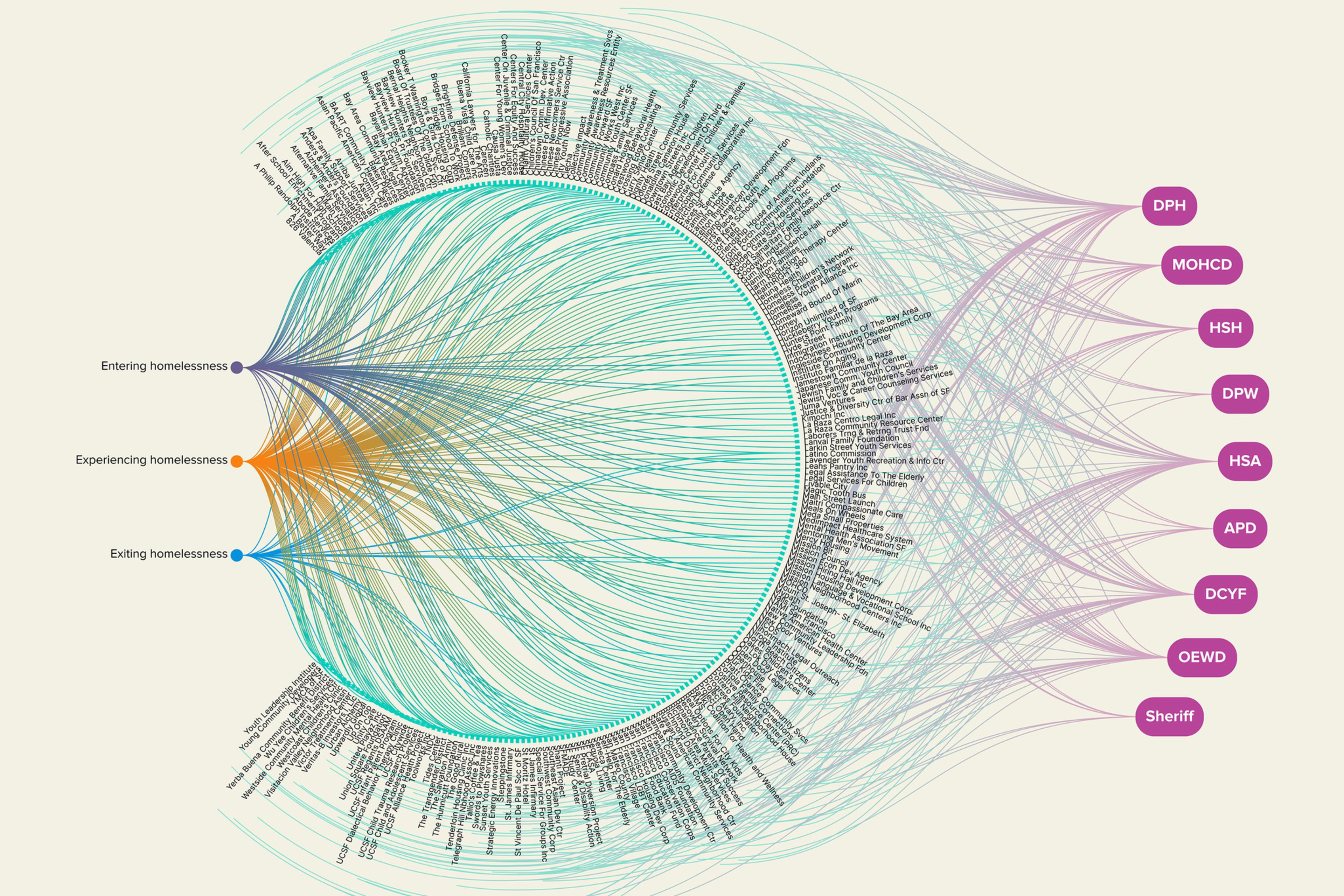Homeless people attempting to escape the streets of San Francisco must navigate a dizzying maze of service providers in order to get help.
A new report and interactive map produced by the nonprofit Crankstart Foundation lays out a web of no fewer than 232 service providers funded by nine city agencies, representing billions of public dollars allocated to the crisis in recent years.
Homeless people seeking shelter, healthcare, financial assistance, and rehabilitative care are often mired in this complex network, representing a dire need to reform the city’s response, argues the “Streets to Stability” (opens in new tab) report.
“These services often overlap, resulting in a fragmented system where people may need to navigate as many as 15 to 30 service providers just to get the help they need,” the report says. “It would be one thing if all this effort and money led to long-term solutions. But they haven’t.”
While street homelessness has decreased slightly in recent years, the number of people without homes in San Francisco has gone up. What’s more, the report states, nobody knows the true amount the city spends on the crisis.
Crankstart’s co-founder and president, Michael Moritz, is also chairman of The Standard.
The graphic is made up of nonprofits and other businesses that receive money Crankstart deemed as homelessness-related. For instance, Tallio’s Coffee and Tea was included because it received grants to pay the wages of low income workers, which Crankstart viewed as a preventive measure. A spokesperson for Crankstart said the report is imperfect due to the way data is kept by the city.
“There is no accurate account of the amount the city spends on homelessness, since the official figures do not include items such as the burden on local hospitals or the cost to the judicial and detention systems,” the report states.
Crankstart proposes a 12-step plan to end homelessness. The plan includes allocating more resources to prevention, condensing services, and breaking down barriers to care. The first step is to build 42,000 units of affordable housing.
The Department of Homelessness and Supportive Housing in April 2023 released its five-year plan to cut street homelessness by half. However, it said, the city is at least $600 million short of achieving the goal.
The department said Thursday it moved 5,256 people into permanent housing last year, and 83% of those housed the previous year did not return to homelessness. The number of homeless people counted this year increased 7% from 2022, while street homelessness decreased by 1%.
On a single night in January, 8,323 people were counted sleeping on city streets and in shelters.
“Nonprofits provide complex support services to people in need in San Francisco. They work hard in difficult circumstances,” Missy Narula, Crankstart CEO, said in a statement. “Despite their best efforts, homelessness continues to be a persistent problem. We hope that this study will provide these dedicated nonprofit workers with additional data and resources to continue their important work.”
